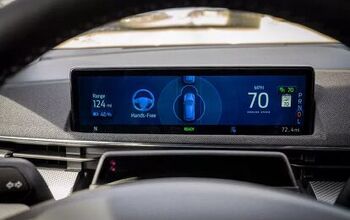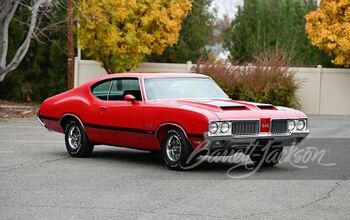Toyota Ordered To Pay $11M In Minnesota Unintended Acceleration Suit
Nine years after a 1996 Camry with an accelerator defect led to a fatal accident in Minnesota, Toyota was found at fault and ordered to pay $11 million.
Reuters reports jurors debated the points of three-week-long trial before finding the automaker 60 percent responsible for the deaths of Javis Trice-Adams Sr. and two children when Koua Fong Lee’s Camry lost its brakes while its accelerator became stuck, striking Trice-Adams Sr.’s Oldsmobile Ciera. Two other passengers were injured in the accident, and Lee spent three years in prison for vehicular manslaughter before being released in 2010 after reports of unintended acceleration involving Toyota products took the spotlight.
Toyota still claims Lee was 100 percent at-fault for the fatal accident, and is considering legal options to pursue. The car itself also wasn’t under the 2009-11 recall of 10 million vehicles made between 2005 and 2010.
Seattle-based writer, blogger, and photographer for many a publication. Born in Louisville. Raised in Kansas. Where I lay my head is home.
More by Cameron Aubernon


































Comments
Join the conversation
Here's my issue, correct me if I'm wrong... and I'm sure someone will. I thought all cases involving Toyota's "unintended acceleration" was centered around cars that were new enough to have had electronic throttles. The '95 camry still used either Toyota's 5S-FE 2.2L or the 3VZ-FE 3.0L V6 engine... which had no electronic throttles, but simply a cables linked directly from the pedal to the throttle body. How could this car have possibly had "unintended acceleration" as outlined by the candidates of Toyota's later recall?
Given that the Camry was 10 years old a(and presumably maintained like all Camrys) I don't know if I can point any fingers at Toyota, even cars with decent brakes need new shoes and fluid once in a while.
6 seconds...........what can you do in 6 seconds? Could you put on your shoe and tie it? Could you take out your wallet/billfold and place your drivers license in my hand? Could you open a bandaid and apply it? Could you make a phone call from where your phone is right now? I don't think any of those things can be done in 6 seconds. You think someone could stop a car speeding out of control with a stuck open throttle and hardly any brakes because all vacuum pressure depleted? I don't think so. Was that jury not paying attention or what? 6 seconds and 550 ft was all the time Koua Fong Lee had to try and stop that '96 Camry and first he had to swerve between two cars - that's when he first hit his brakes and lost all vacuum pressure in his brake vacuum assist system. He had almost no brakes left when he came upon the Oldsmobile stopped at the red light at the stop of the exit ramp.
I was present during most of fhis liability lawsuit, it pertained only to the mechanical throttle for years 1992-1996 - this case was specifically the '96 Camry LE. The design defect was proven to be in the use of plastic pulleys inside the accelerator control system (cruise control actuator). The upper plastic pulley rests up against a metal bracket. That metal bracket sits about 6-7" from the exhaust manifold. That manifold heats up anywhere from 900-1000 deg F. Tests were conducted on the accelerator control system by heating up the inside of it to 165 deg F. and then we watched as the pulley stuck to the metal bracket and wouldn't release the accelerator cable. It took anywhere from 4 to 6 mins during each of the 4 tests for the plastic pulley to cool down enough that it would release the accelerator cable. Not good.